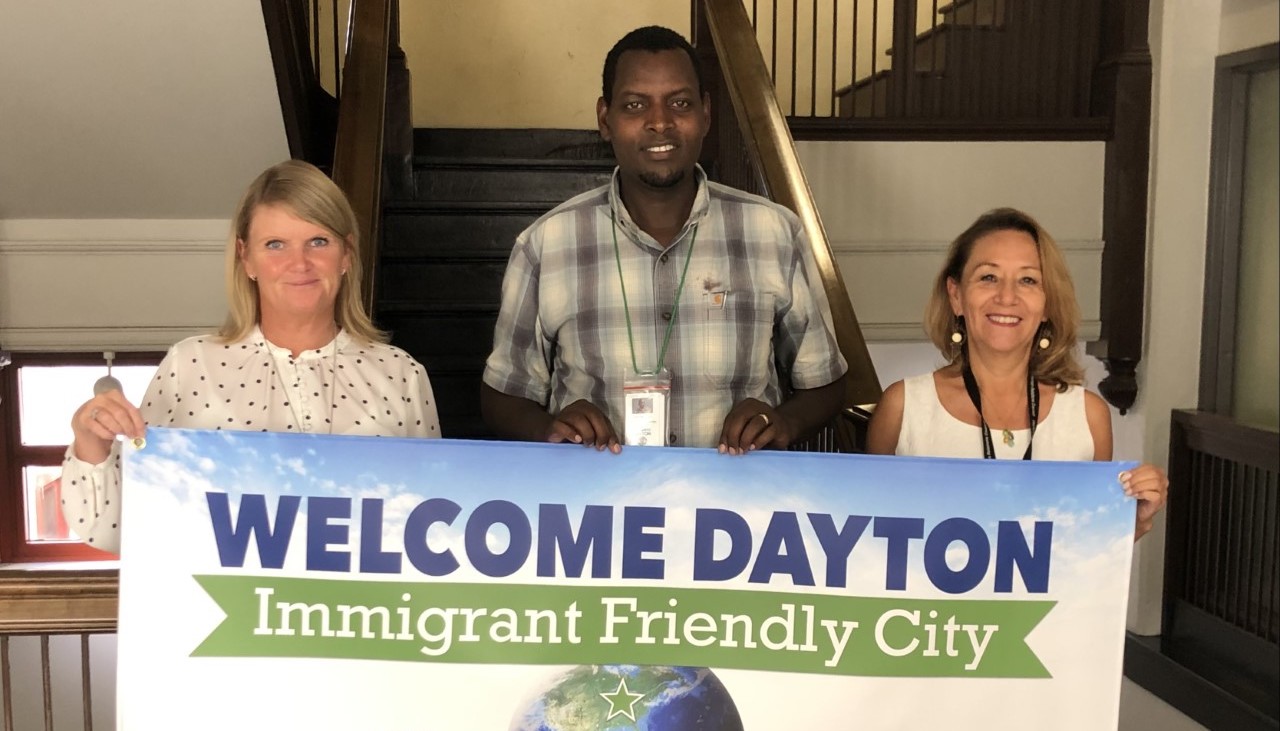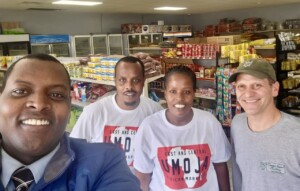
How becoming Certified Welcoming supports continuity in local programs in Dayton
Author: Maya Smith-Custer
A common concern for local government welcoming programs is change, particularly staff change or organizational restructuring. While the goal is to institutionalize welcoming and immigrant inclusion work throughout local government, the work often relies on a few select staff within the local government to be the conveners and champions. As such, a change in staff or function can disrupt continuity and create uncertainty for the program’s future.
Becoming Certified Welcoming helps ensure that the important work of community programs continues beyond staff and administrative changes. In this blog, we spoke with Jeannette Horwitz, program coordinator of Welcome Dayton, an initiative of the City of Dayton, Ohio responsible for the city’s welcoming and immigrant inclusion efforts. She shares her experience with how Certified Welcoming and the Welcoming Standard created a roadmap for the work, particularly in times of transition.
Background
In June 2021, Welcome Dayton went through several organizational changes. First, the program moved from the city’s Human Relations Council to a newly created Department of Planning, Neighborhoods and Development (PND) under the Division of Community Engagement. New staff were also hired, including filling the Welcome Dayton Program Coordinator position, which had been vacant for two years.
A starting place
When Jeannette joined Welcome Dayton in 2021, the city’s Certified Welcoming designation was up for recertification, a process that involves reevaluating the city’s progress in maintaining its Certified Welcoming designation since its original certification. This requires consulting with a broad range of stakeholders from within the local government and in the community and gathering information on where their welcoming work stands today.
Since Jeannette wasn’t around in 2017 when the city first became Certified Welcoming, she looked toward the Welcoming Standard — the seven framework areas that underpin Certified Welcoming designations — and the certification report from Welcoming America to put her on the right track.
Jeannette said, “It was nice to have an outline of what it means to be welcoming. When I look at the Welcoming Standard as a whole, it is an outline of various components of what makes programs welcoming. It’s a checklist where I can ask, ‘Did we do this? Where can I look to see if we can check that off? Is that something we need to work on?’”
Leaning on others

Desire Ntwayingabo (left), Welcome Dayton Community Engagement Specialist, with the owners of Umoja East and Central African Market in Dayton (center) and Matt Tepper (right), President of Old North Neighborhood Association. Credit: Desire Ntwayingabo
While Jeannette was charged with leading the recertification effort, she was not alone. The Welcome Dayton program has a committee appointed by the Dayton City Commission to guide and ensure the city’s welcoming work meets its goals, including the recertification of the city’s Certified Welcoming designation.
When Jeannette conducted a self-assessment of the city’s current welcoming work, she reached out to the committee members and its five subcommittees for input. Using the Welcoming Standard as a guide, the members identified where they were making progress, where improvements were still needed, and next steps to accomplish their goal.
For example, under the Equitable Access framework area of the Welcoming Standard, the City of Dayton still needed to update its language access policy and train more departments on language access best practices before it could move forward with recertification.
“The committees generally react positively to the feedback. They like that [the self-assessment] provides a plan for their work going forward, as well as identifying strengths and areas of improvement,” Jeannette said.
Putting a name to the work and process
A key value that Certified Welcoming provides for staff like Jeannette is credibility. “Being Certified Welcoming strengthens and affirms [the welcoming work] you’re doing. It is a very rigorous process because someone else was evaluating us, telling us what we were doing well and what could be improved. The Certified Welcoming process puts a name towards that work,” she said.
Jeannette likens this to accreditation processes in the education field. As a former faculty member for a university intensive English program, she recalls how tough it was to get accredited, but ultimately how valuable it was. “People knew that if they came to our program they would receive a high-quality education. And it’s because somebody was making sure we were maintaining high standards.”
***
Changes in staff and priorities are inevitable in any organization, but for municipalities it can present unique challenges in terms of program impact. Undergoing the Certified Welcoming program provides one way for communities to ensure their welcoming work has a path to continue, no matter the challenges that may come.
Maya Smith-Custer was an intern at Welcoming America in summer 2022.